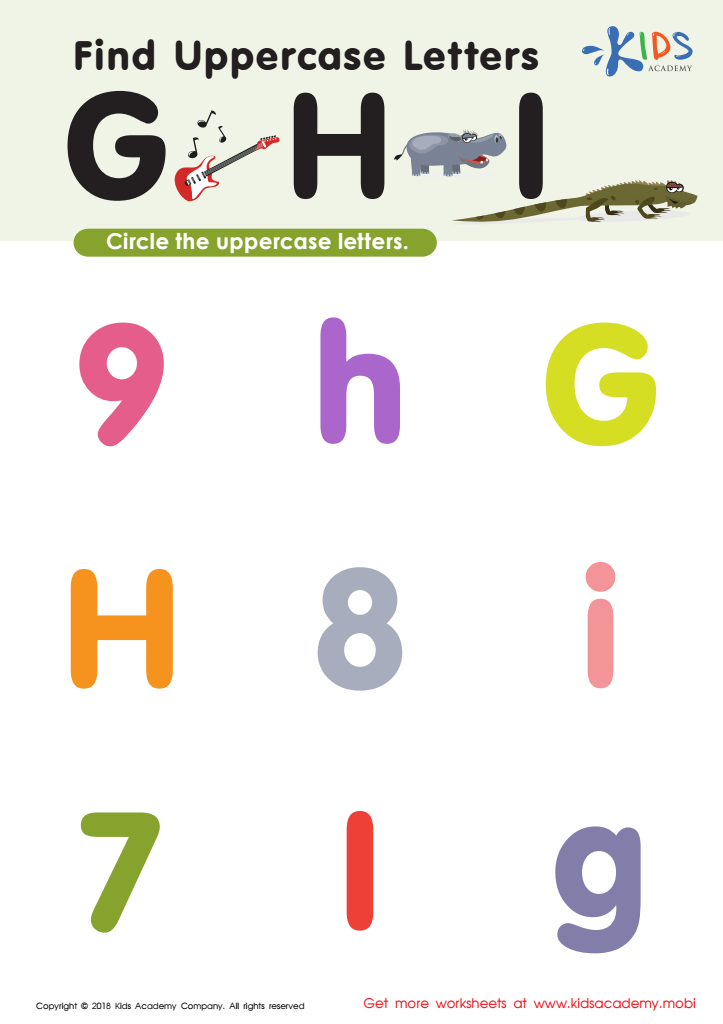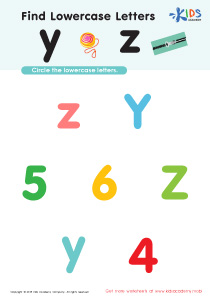Alphabet familiarity Normal Uppercase Letters Worksheets for Ages 4-5
4 filtered results
-
From - To
Introduce your child to the world of letters with our Alphabet Familiarity Normal Uppercase Letters Worksheets, designed specifically for ages 4-5. These engaging and colorful printable worksheets on Kids Academy help children recognize, trace, and master uppercase letters. Each worksheet is thoughtfully created to boost your child's confidence, fine motor skills, and foundational alphabet knowledge. Enhance early literacy in an enjoyable way as your little one embarks on the path to reading and writing success. Perfect for preschoolers and kindergarteners, these worksheets provide a fun and educational activity to support the early stages of their academic journey.


Find Uppercase Letters G, H, and I Worksheet


Find Uppercase Letters Worksheet


Find Uppercase Letters J, K, and L Worksheet


Find Uppercase Letters A, B, and C Worksheet
Familiarity with uppercase letters in the alphabet is crucial for children aged 4-5, as it establishes the foundational skills necessary for early literacy. At this formative age, children are developing cognitive and motor skills, making it the perfect time to introduce them to the building blocks of reading and writing. Recognizing and differentiating uppercase letters helps in letter recognition, a fundamental step towards understanding the relationship between spoken and written language. This familiarity also aids in the development of phonemic awareness: children start to correlate letters with their corresponding sounds.
For parents and teachers, ensuring that children are comfortable with uppercase letters can have a lasting impact on their educational trajectory. It promotes confidence and enthusiasm in learning, making future literacy skills less intimidating. Moreover, early exposure to uppercase letters can help identify any learning difficulties or delays, allowing for timely intervention and support. Such proactive measures ensure that children do not fall behind and remain engaged.
In essence, prioritizing alphabet familiarity for 4-5 year-olds lays a strong educational foundation, promoting early literacy, boosting self-esteem, and enabling early identification of learning challenges. It wraps around the goal of nurturing a lifelong love for reading and learning.
 Assign to My Students
Assign to My Students















